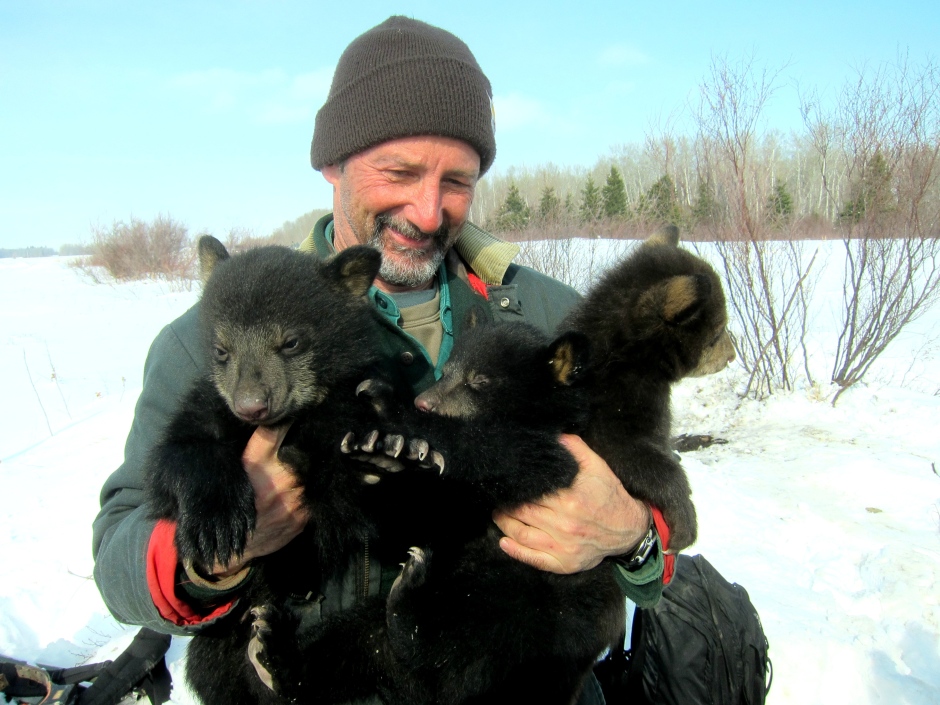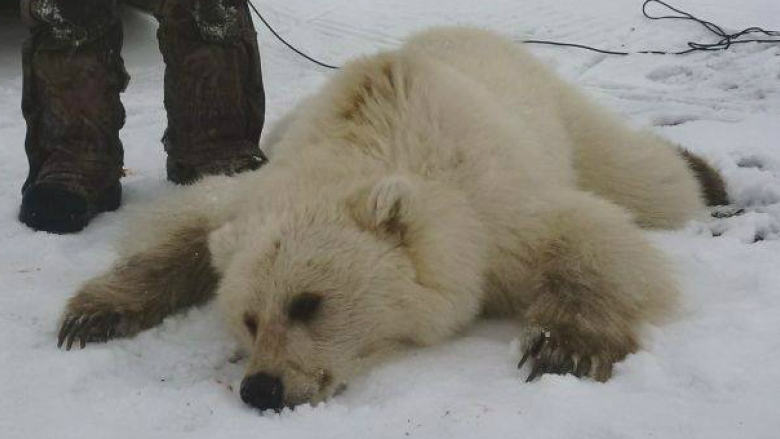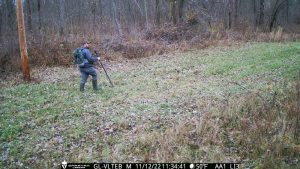Perched atop a hill near Arviat, Nunavut in Canada’s north, Didji Ishalook spotted something from a distance while hunting earlier this month.
What he first believed to be an Arctic fox or small polar bear turned out to be something he never could have expected. As he got closer, he determined it to be a bear, but could not put his finger on the exact species of bear he was witnessing.
What the hunter ended up shooting turned out to be a grizzly-polar bear hybrid, a rare occurrence, but one that has been spotted in the area on three different occasions since 2006.
“It turned out to be a grizzly half-breed,” Ishalook told CBC News.
“It looks like a polar bear but…it’s got brown paws and big claws like a grizzly. And the shape of a grizzly head.”

Dave Garshelis, one of the world’s foremost bear experts and a research scientist from the Minnesota Department of Natural Resources agreed with Ishalook, shooting down allegations that the bear could perhaps be an albino grizzly bear.
“An albino bear would have a light-coloured or pink-coloured nose, and no pigmentation in the eyes and the claws,” Garshelis said.
“This bear has a black nose, and normal dark-coloured eyes and claws. So, it’s not an albino.”
He went on to state that it is of his belief that this rare phenomenon in interbreeding between the two bear species is brought on by climate change.

“With climate change, grizzly bears are moving further north, so there is more overlap between grizzly bears and polar bears in terms of their range,” Garshelis said.
“There are even American black bears that are moving further north. And a few black bears have been spotted outside of Arviat.”
According to Garshelis, the bear is unofficially referred to as a grolar bear, so long as the sire is a grizzly bear. Otherwise, in the event the sire is a polar bear, it should be referred to as a pizzly bear.
Ishalook plans to display the bear hide at his home as a memory of his rare encounter with a grolar or pizzly bear.
H/T: CBC News
Feature Image: Didji Ishalook




